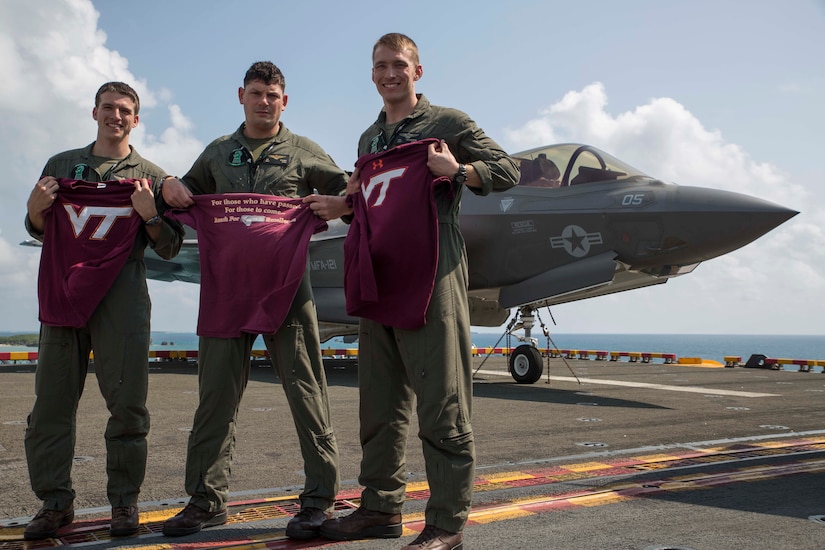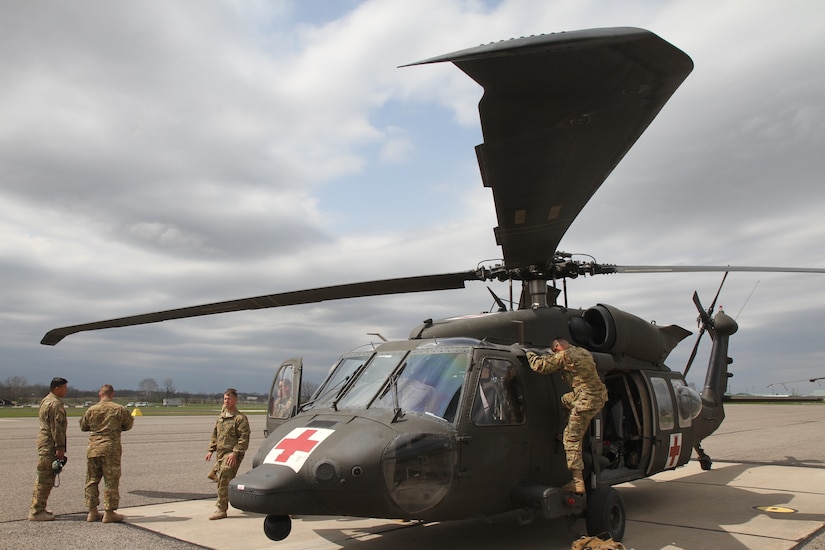By Marine Corps Cpl. Bernadette Wildes, 31st Marine
Expeditionary Unit
PACIFIC OCEAN -- Three Virginia Tech alumni are now serving
as Marine Corps aviators.
Marine Corps Maj. John Stuart, Capt. Evan Slusser and Capt.
Andrew Thornberg fly the F-35B Lightning II out of Iwakuni, Japan, with Marine
Fighter Attack Squadron 121.
Flying with the 31st Marine Expeditionary Unit aboard the
amphibious assault ship USS Wasp during Spring Patrol 2018, all three
participated in this year’s historic first operational deployment of the F-35B
with a MEU.
The 31st MEU, based out of Okinawa, Japan, is a
forward-deployed, flexible air-ground-logistics team capable of accomplishing a
wide range of military operations in support of U.S. Pacific Command.
“The fact that three of us end up being pilots in the Marine
Corps who end up flying the F-35 [and] end up in the same squadron in Japan --
the chances are pretty wild,” said Slusser, from Prince George, Virginia.
Virginia Polytechnic Institute and State University, also
known as Virginia Tech, is located in Blacksburg, Virginia. The school’s maroon
and orange are proudly worn and never forgotten by the Hokies of Virginia Tech.
Remembering Virginia Tech
“It’s just beautiful out there,” Slusser said. “It’s in the
southwest corner of Virginia in the mountains. You get all four seasons. You
get snow, you get summer. You get the best fall of anywhere on the planet, and
the springtime’s not bad either. The school and scenery are beautiful.”
Slusser played soccer and majored in international studies
with a concentration in global politics.
Thornberg said it’s unique to have the Virginia Tech
community all the way on the other side of the world in Japan. They even get
together to watch the games on TV.
“When I think of Virginia Tech and Blacksburg, I think of
home,” said Thornberg, from Fairfax, Virginia. “I’m very grateful to the
Virginia Tech community. It has shaped my life and made me who I am today. I
will always be a Hokie at heart.”
Thornberg, who graduated with a degree in international
studies, played lacrosse and was a part of the Virginia Tech Rescue Squad, an
all-volunteer, student-run organization that provides emergency medical
services to the university community. As a member of the VTRS, Thornberg was a
first-responder during the tragic April 16, 2007, school shooting that claimed
the lives of 32 Virginia Tech students.
Stuart was a member of the Student Engineer’s Council and
the Virginia Tech Motocross Club. He has a degree in industrial systems
engineering.
“Virginia Tech didn’t just feel like home; Virginia Tech was
home to me,” said Stuart, from Marshall, Virginia. “My best friends in life,
even to this day, went to Virginia Tech.”
Slusser agreed.
“From my first day to the last [at Virginia Tech], it was
one of the best times of my life,” Slusser said. “The people there are amazing,
the place itself is amazing. I would love to retire and end up living somewhere
near that school.”









